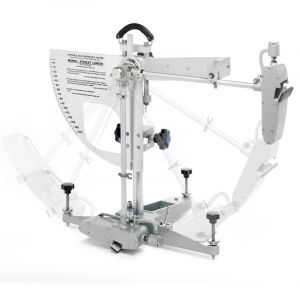Airports are bustling hubs of activity, with thousands of passengers and staff moving through terminals daily. Amid this chaos, ensuring safety is a top priority. Slip resistance testing importat in preventing accidents and maintaining a safe environment for everyone.
What Is Slip Resistance?
Slip resistance Testing refers to a surface’s ability to prevent slips and falls by providing adequate friction. It is measured using various methods to determine the safety of flooring under both wet and dry conditions.
Why Is Slip Resistance Crucial in Airports?
Airports face unique challenges due to their constant activity and diverse surfaces. High foot traffic, combined with weather conditions like rain or snow, can create hazardous situations. Ensuring slip-resistant surfaces is not just a safety measure—it’s a legal requirement to minimize liabilities.
Common Areas Requiring Slip Resistance Testing
Certain areas in airports are more prone to slips and require frequent testing:
- Terminals and Concourses: Busy with passengers and luggage carts.
- Boarding Bridges and Ramps: Often exposed to outdoor elements.
- Restrooms and Dining Areas: Frequently wet or greasy surfaces.
- Outdoor Surfaces: Rain, snow, and de-icing chemicals increase risks.
Pendulum Testing
The pendulum test is a globally recognized method that mimics the action of a slipping foot. It provides reliable results for both dry and wet conditions. Pendulum testing is a method used to measure the slip resistance of flooring and pedestrian surfaces. It evaluates how slippery a surface is when wet or dry, helping to assess the risk of slips and falls. This testing is commonly used in industries like construction, public safety, and manufacturing to ensure compliance with safety standards.
Standards and Guidelines for Airport Slip Resistance
Regulatory bodies like ISO and ASTM have established guidelines for slip resistance. Airports must adhere to these standards to ensure compliance and safety.
Case Example: Slip and Fall Incident at Heathrow Airport
In 2019, a passenger slipped near the check-in counter due to a freshly mopped floor without adequate warning signage. The injured individual sued the airport, leading to a settlement and reputational damage. The incident underscored the need for better maintenance practices and awareness.
Impact of Slips and Falls
- Injuries and Lawsuits: Slip and fall accidents can lead to severe injuries, including fractures and head trauma. Airports may face legal claims, resulting in financial loss and reputational harm.
- Operational Disruptions: Accidents can cause delays, especially when they occur in critical areas like boarding gates or security checkpoints.
- Reputational Damage: Frequent incidents can deter passengers and affect the airport’s image.
- Increased Insurance Costs: Claims and settlements increase insurance premiums.
Mitigation Strategies
- Flooring Design: Use slip-resistant materials in high-risk areas such as entrances, restrooms, and food courts.
- Maintenance Protocols:
- Implement effective cleaning schedules to minimize wet floors during peak hours.
- Use fast-drying cleaning solutions.
- Signage and Communication:
- Place clear, visible warning signs in multiple languages.
- Use temporary barriers during maintenance activities.
- Environmental Controls:
- Install entrance mats to capture water and debris.
- Ensure drainage systems are effective in preventing puddles.
- Passenger Awareness:
- Promote awareness through announcements and digital displays.
- Offer luggage carts to reduce the risk of passengers losing balance.
- Technology Integration:
- Deploy smart sensors to detect wet or hazardous surfaces.
- Use CCTV for monitoring high-risk zones.
Outcome: Case Study at Singapore Changi Airport
Singapore Changi Airport implemented an advanced cleaning protocol and real-time hazard detection system. With AI-driven sensors, the airport identified wet areas and dispatched cleaning teams immediately. As a result, slip incidents dropped by 40% within a year.








